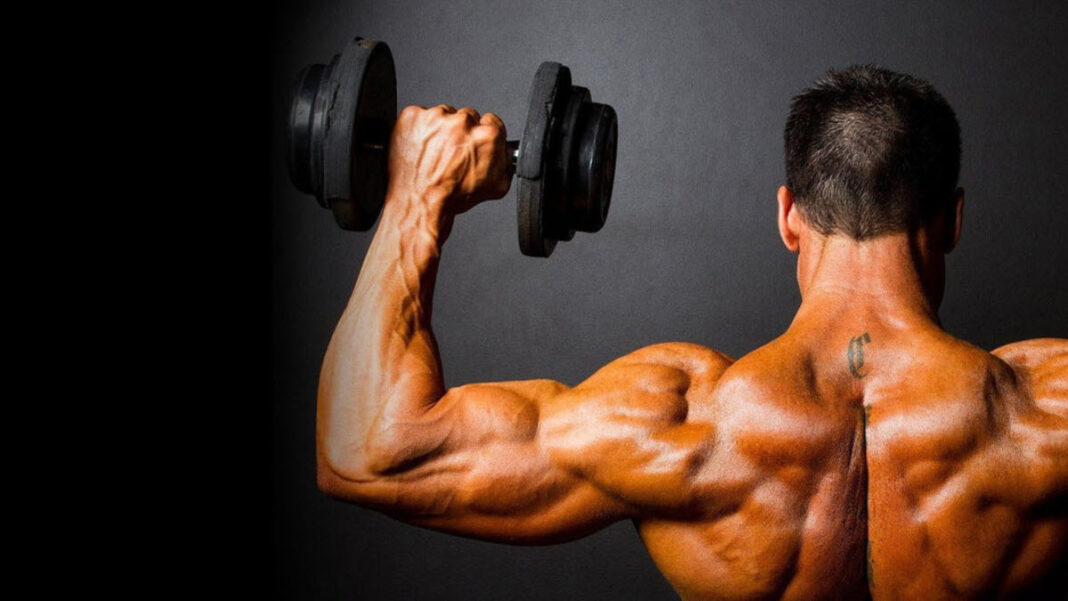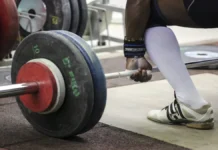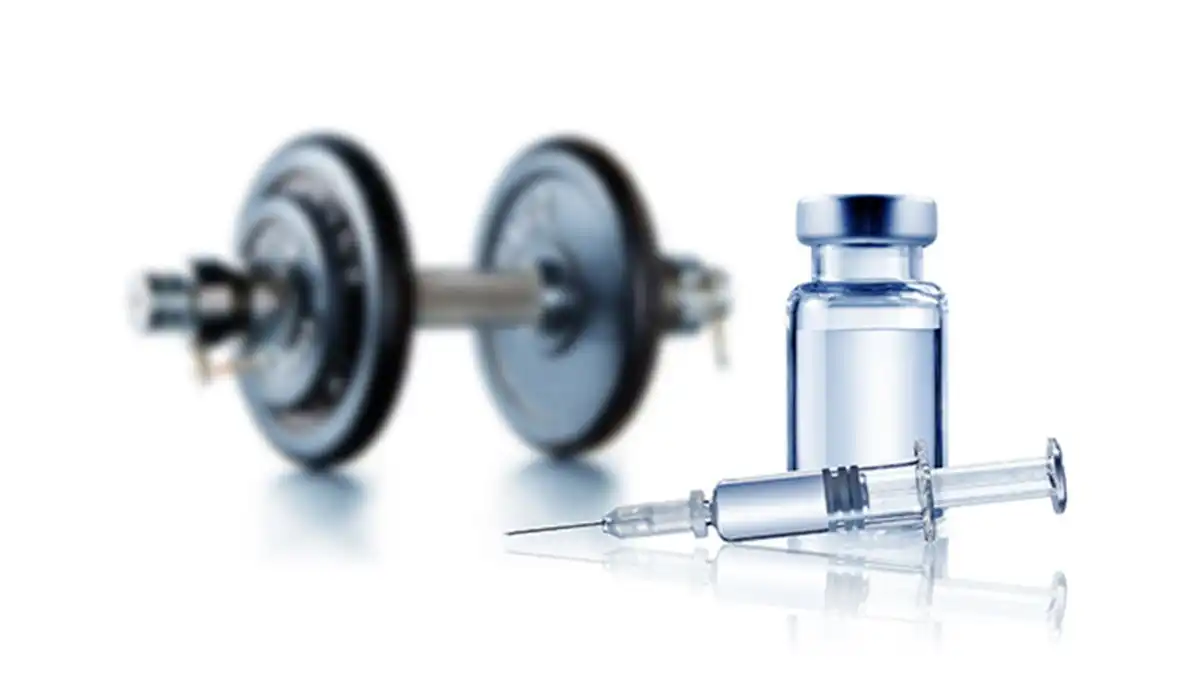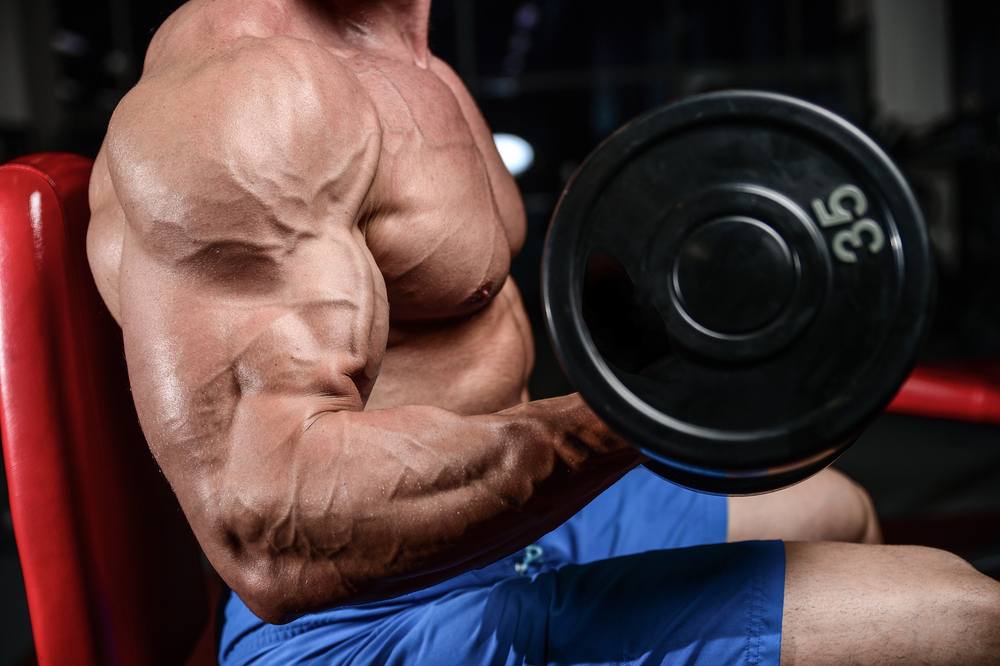Introduction
Weightlifting, a physically and mentally demanding discipline, relies on brute strength, technique, and perseverance. Athletes engaged in this practice subject their bodies to extreme loads, making it a sport where musculoskeletal injuries are common. Among these injuries, osteolysis of the distal clavicle, also known as “weightlifter’s shoulder,” stands out for its frequency and potentially debilitating impact.
Osteolysis of the distal clavicle is a condition that specifically affects the acromioclavicular (AC) joint. Located at the end of the clavicle, this joint is subjected to high stress during repetitive movements and heavy loads characteristic of weightlifting. Movements such as the bench press, military press, or snatch place intense stress on the AC joint, causing repetitive microtraumas that, in the long term, can lead to the degradation of bone tissue at the distal clavicle.
Early signs of distal clavicle osteolysis include localized shoulder pain, often described as dull or throbbing, that intensifies during exercises that stress the AC joint. This pain may gradually worsen, limiting shoulder mobility and making it difficult or impossible to continue training. In advanced cases, the athlete may experience tenderness to touch over the joint and notice swelling or visible deformity in the affected area.
The origin of this condition is primarily mechanical. High loads placed on the AC joint cause increased intra-articular pressure, which, in the absence of rest or adequate treatment, causes bone resorption. This resorption, or osteolysis, is the body’s response to the constant stress placed on the joint. The resulting microfractures compromise the strength of the bone and can lead to permanent damage if left untreated.
Given this challenge, it is crucial for lifters and healthcare professionals to recognize the early symptoms of distal clavicle osteolysis. Early management, including rest, training modifications, and in some cases, medical interventions, can prevent progression to a disabling condition. In addition, preventive strategies, such as targeted muscle strengthening and proper technique, are essential to protect the AC joint from long-term damage.
In summary, weightlifter’s shoulder represents a major challenge for strength athletes. Understanding the nature of this condition, its causes, and how to prevent it is essential to maintaining the health and performance of weightlifters in the long term.
Causes
Osteolysis of the distal clavicle, commonly referred to as “weightlifter’s shoulder,” is a condition that primarily results from excessive mechanical stress placed on the acromioclavicular (AC) joint. This condition is particularly common in athletes involved in weightlifting or other strength sports that involve repetitive movements and the use of heavy loads.
Repetitive mechanical constraints
One of the main causes of distal clavicle osteolysis is chronic mechanical stress on the AC joint. During movements such as the bench press, military press, or snatch, the AC joint is subjected to intense stress. These movements involve raising the arms overhead, which increases the load on the AC joint and the distal clavicle. With each repetition, microtrauma accumulates, creating an environment where bone and tissue cannot regenerate effectively between training sessions. This repeated mechanical overload gradually leads to bone resorption, i.e., the breakdown of bone tissue, at the distal end of the clavicle.
Increased intra-articular pressure
During strength training, the pressure inside the AC joint increases significantly. This excessive pressure can cause microfractures in the clavicle, which are exacerbated by lack of adequate recovery or improper training techniques. Increased intra-articular pressure is often due to poor load distribution or improper alignment of the joint during weight lifting movements. Over time, this repeated pressure disrupts blood flow to the area, reducing the supply of essential nutrients and oxygen needed for bone tissue repair. This promotes bone resorption, making the bone increasingly vulnerable.
Individual anatomical factors
Certain anatomical features may predispose individuals to developing this condition. For example, a naturally shorter clavicle or a particular morphology of the AC joint may increase the risk of distal osteolysis. In addition, bone density, which varies from person to person, also plays a crucial role. Individuals with lower bone density may be more susceptible to damage to bony structures under mechanical stress.
Training technique and progressive overload
Osteolysis of the distal clavicle can also be aggravated by improper training technique or poorly managed progressive overload. Progressing too quickly in increasing loads, without allowing the body to adapt, can accentuate microtrauma. Similarly, incorrect technique, where the alignment of the AC joint is compromised, intensifies the stress on the clavicle.
Repetitive Strain Injuries
The primary cause of distal clavicle osteolysis is repetitive microtrauma to the acromioclavicular (AC) joint during strength exercises, particularly those involving repetitive pushing or overhead lifting movements. Exercises such as the bench press, military press, or front squat create shear and compressive forces on the AC joint. Each repetition of these movements results in small traumas that, over time, can accumulate and cause bone resorption at the end of the clavicle. The lack of adequate recovery time between training sessions allows little healing between episodes of mechanical stress, promoting progressive bone deterioration.
Muscle Imbalances and Joint Stability
Muscle imbalances also play a crucial role in the development of this condition. The muscles surrounding the AC joint, such as the deltoid, trapezius, and pectoral muscles, are essential for shoulder stability. However, disproportionate development of these muscles can lead to poor distribution of forces at the AC joint. For example, if the pectoral muscles are overdeveloped relative to the shoulder stabilizing muscles, this can increase the pressure on the AC joint and cause excessive strain on the distal clavicle. This imbalance can exacerbate microtrauma and accelerate osteolysis.
Overuse and Improper Technique
Overuse is a key factor in the development of distal clavicle osteolysis. Weightlifters, especially those who follow intensive training regimens without allowing adequate time for recovery, are more likely to develop this condition. Additionally, improper technique, such as incorrect shoulder alignment during the execution of movements, can increase stress on the AC joint. For example, if the shoulders are not properly positioned during the bench press, the load can be transferred unevenly to the clavicle, increasing the risk of microtrauma.
Biomechanical Factors and Anatomical Predispositions
Some individuals may be anatomically predisposed to distal clavicle osteolysis due to variations in the structure of their clavicle or AC joint. A shorter clavicle, for example, may increase the concentration of forces on the AC joint, making this area more susceptible to microtrauma. Additionally, abnormalities in the natural alignment of the AC joint, such as excessive clavicle tilt, may increase the likelihood of developing this condition.
Symptoms
Symptoms of distal clavicle osteolysis, also known as weightlifter’s shoulder in this context, can vary from person to person. However, some common symptoms may include:
- Pain: Pain is often the most obvious symptom. It may be located in the distal clavicle and may be felt during training, at rest, or during certain activities.
- Tenderness: The area around the distal clavicle may be tender to touch.
- Swelling: Swelling or increase in size of the distal clavicle may occur due to inflammation.
- Muscle weakness: Severe osteolysis can lead to weakness of surrounding muscles.
- Clavicle Deformity: In some advanced cases, a distal clavicle deformity may be visible or palpable.
- Reduced shoulder mobility: Due to pain and weakness, there may be limited shoulder mobility.
It is important to note that these symptoms can be progressive, and people with the condition may initially experience only mild or intermittent pain. However, if the condition is left untreated, it can progress to more serious symptoms.
Prevention
Prevention of distal clavicle osteolysis in weightlifters involves strategies to reduce the load on the clavicle and strengthen the surrounding muscle and bone structures. Here are some prevention tips:
- Proper Weightlifting Technique: Make sure you use proper technique when performing weightlifting exercises. This includes correct shoulder positioning, controlled movements, and using appropriate weights.
- Exercise Variation: Avoid over-specializing in one type of exercise. Incorporate a variety of exercises to reduce constant pressure on the collarbone.
- Proper Warm-Up: Before each workout, perform a proper warm-up to prepare muscles and joints for physical activity.
- Muscle strengthening: Strengthen surrounding muscles, including shoulder, back and neck muscles, to improve stability and reduce the load on the collarbone.
- Gradual increase in load: Avoid increasing the load too quickly. Gradual progression allows the body to adapt to the new constraints.
- Balance training and recovery: Make sure to allow adequate recovery between workouts. Overexertion can increase the risk of injury.
- Monitoring for symptoms: Be alert for any signs of pain, tenderness, or changes in the collarbone. If symptoms occur, consult a healthcare professional.
- Posture Correction: Good posture, both during training and in everyday life, can reduce unnecessary strain on the collarbone and shoulders.
- Use of Proper Equipment: Be sure to use proper weightlifting equipment, including joint supports if necessary, to minimize excessive strain.
X-ray
Osteolysis of the distal clavicle can be visualized on plain radiographs, although more advanced imaging techniques, such as MRI or CT scan, may also be used for a more detailed evaluation. On an x-ray, there are some specific signs that may indicate the presence of distal clavicle osteolysis in a weightlifter. These signs may include:
- Decreased bone density: X-ray may reveal decreased bone density at the distal end of the clavicle, indicating loss of bone mass.
- Bone erosion: Signs of bone erosion or resorption may be visible, showing areas where the bone appears to have been “eaten” or reduced.
- Clavicle Deformity: An X-ray may show deformity of the distal clavicle, often as decreased thickness or irregular areas.
- Stress fracture: In some cases, a stress fracture or fracture lines may be seen, indicating increased fragility of the bone.
- Signs of inflammation: X-rays may also show indirect signs of inflammation, such as changes in the surrounding soft tissues.
These radiographic findings may vary depending on the severity of osteolysis and the stage of the condition. However, it is important to emphasize that accurate interpretation of radiographs should be performed by a qualified healthcare professional, such as a radiologist or orthopedist.

Osteopathy
Here is how an osteopath might approach the case of distal clavicle osteolysis in a weightlifter:
- Comprehensive Assessment: The osteopath will begin with a thorough assessment of the condition, taking a medical history, performing physical tests, and assessing posture and biomechanics.
- Examination of the affected area: The osteopath will specifically examine the collarbone, shoulder, neck, and other surrounding structures to identify any movement restrictions, muscle tension, or misalignment that could be contributing to the condition.
- Manual treatment: The osteopath will use manual techniques to restore mobility, reduce muscle tension, and promote blood and lymph circulation. This may include gentle manipulation, stretching, myofascial release techniques, and other approaches.
- Work on overall balance: The osteopath can also work on other parts of the body to restore overall balance. For example, if he identifies postural imbalances or tension in the back, he can work on these areas to relieve pressure on the shoulders.
- Advice and exercises: The osteopath can provide advice on ergonomics, posture, and recommend specific exercises aimed at strengthening the muscles around the collarbone and shoulder.
- Interprofessional collaboration: The osteopath can work in collaboration with other health professionals, such as physiotherapists, sports medicine physicians, or orthopedists, to ensure a comprehensive and coordinated approach to treatment.
It is important to note that osteopathy is a complementary approach, and its effectiveness may vary from one person to another.
Conclusion
Distal clavicle osteolysis, commonly referred to as “weightlifter’s shoulder,” is a multifaceted condition primarily caused by repetitive microtrauma and excessive mechanical stress on the acromioclavicular (AC) joint. This condition, particularly prevalent among strength athletes, underscores the importance of proper training techniques, load management, and adequate recovery. Muscular imbalances, anatomical predispositions, and increased intra-articular pressures also contribute to the etiology of this disorder. Preventing and effectively managing this condition requires a holistic approach that includes adjusting training practices, ensuring proper technique, and implementing adequate rehabilitation and monitoring of the joint’s condition. Ultimately, a comprehensive understanding of these risk factors will allow athletes and practitioners to minimize injury risks and promote long-term, healthy performance.
References
- Kaplan, L. D., Flanigan, D. C., Jost, P. W., et al. (2009). Prevalence and Associated Factors of Distal Clavicle Osteolysis in National Football League Players. The American Journal of Sports Medicine, 37(8), 1370-1374. doi:10.1177/0363546509332305
- Jobe, C. M., Jobe, F. W., Pink, M., et al. (1996). The Shoulder in Competitive Athletics. Journal of Bone and Joint Surgery, 78(2), 242-253.
- Ferry, T., Bergström, U., Hedlund, R., & Sundberg, T. (2005). Acute traumatic anterior dislocation of the shoulder in young patients: A 10-year prospective cohort study. British Journal of Sports Medicine, 39(7), 518-523. doi:10.1136/bjsm.2004.014092
- Goldberg, J. A., Bruce, W. J., & Walsh, W. R. (1998). Proximal and Distal Clavicle Osteolysis: A Review of the Literature. Australian and New Zealand Journal of Surgery, 68(6), 383-386. doi:10.1111/j.1445-2197.1998.tb02251.x
- Lajtai, G., Snyder, S. J., Snyder, J. M., et al. (2002). Distal Clavicle Osteolysis: An Analysis of the Findings at Operative Resection. Journal of Shoulder and Elbow Surgery, 11(2), 121-126. doi:10.1067/mse.2002.121634

























